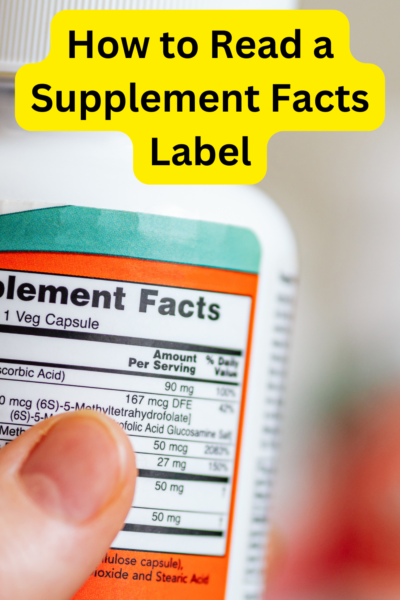Introduction: In today’s health-conscious society, many individuals rely on dietary supplements to fill nutritional gaps or support specific health goals. However, navigating the aisles of supplement stores can be overwhelming, especially when faced with a plethora of products each boasting unique benefits. Furthermore, many supplements contain things that you may not want to put in your body, or they may not have enough of what you need or they not be what they seem to be. One crucial tool to help you make informed choices is the Supplement Facts label. In this guide, we’ll break down the key components of a Supplement Facts label, empowering you to make educated decisions about the supplements you choose to incorporate into your routine.
- Serving Size and Servings per Container: The first step in understanding a Supplement Facts label is to identify the serving size and the number of servings per container. This information sets the foundation for interpreting the rest of the label accurately. Pay attention to these values to ensure that you’re consuming the recommended amounts.
- Calories and Nutrients: Move on to the calorie and nutrient section, which outlines the amount of energy and essential nutrients provided by one serving. Keep an eye on macronutrients like carbohydrates, proteins, and fats, as well as micronutrients such as vitamins and minerals. This information is crucial for maintaining a balanced diet and meeting your nutritional needs.
- % Daily Value (%DV): The %DV column indicates the percentage of a nutrient in a serving compared to the daily recommended intake. Understanding %DV can help you assess whether a supplement provides a significant amount of a particular nutrient. A general rule of thumb is to aim for supplements with higher %DV values, especially for essential vitamins and minerals.
- Ingredient List: Next, scrutinize the ingredient list. Ingredients are listed in descending order by weight, so the primary components come first. Look out for potential allergens, additives, or preservatives, sugars, natural flavors or other things that may not align with your dietary preferences or restrictions.
- Nutrient Amounts: The specific amounts of each nutrient per serving are crucial to evaluating the efficacy of a supplement. Compare these values to established dietary guidelines to ensure that you’re getting the right amount without exceeding recommended limits.
- Daily Value Footnotes: Some Supplement Facts labels include footnotes providing additional context about certain nutrients. For example, footnotes may explain that the %DV is based on a 2,000-calorie diet and that your needs may vary depending on age, sex, and activity level. Take note of these footnotes to refine your understanding of the information presented.
Conclusion: Reading a Supplement Facts label is an essential skill for anyone seeking to make informed choices about their nutritional intake. By paying attention to serving size, nutrient amounts, %DV, and ingredient lists, you can confidently select supplements that align with your health and wellness goals. Remember, it’s always advisable to consult with a healthcare professional before introducing new supplements into your routine to ensure they complement your overall health and lifestyle.
Need help? I’m always happy to share my knowledge with you via a 1 on 1 conversation.

Did this help you? If so, I would greatly appreciate a share on Facebook, twitter, linkedin, or pinterest.
My Favorite Products (Affiliate links- if you make a purchase I may earn a small commission)
Thrive Market - healthy gluten free, sugar free and speciality online food and household products
Silk and Sonder Monthly Journals and Planners
My Portable Infrared Sauna
Self Care Journal
Martie discounted food
Olipop - healthy soda with probiotics and prebiotics
Digestion Kit
Stress Oils








